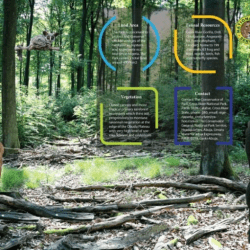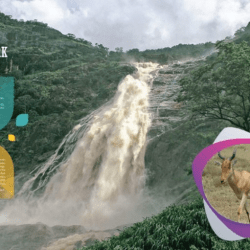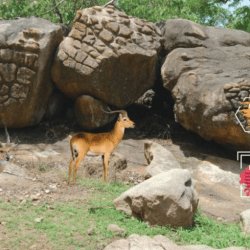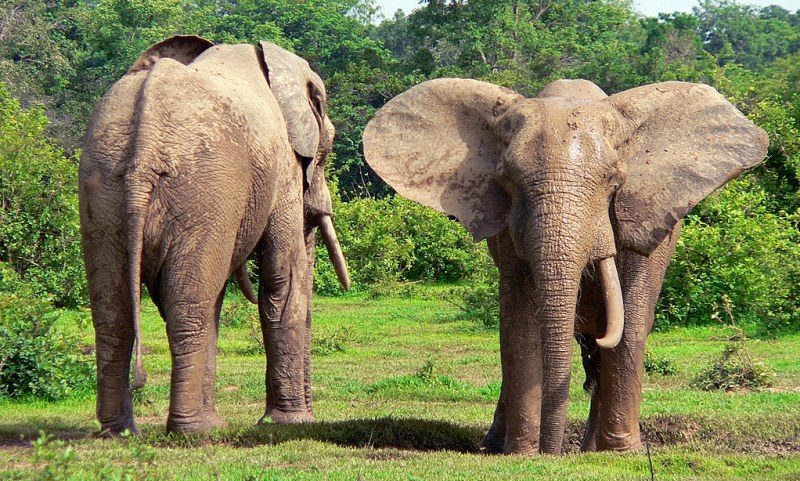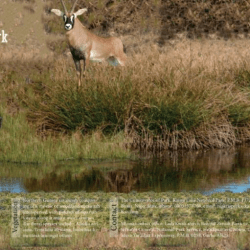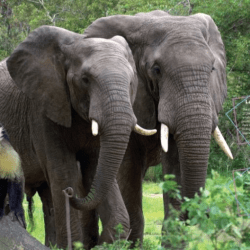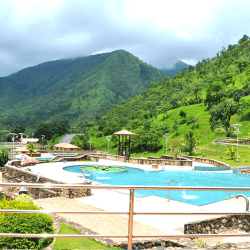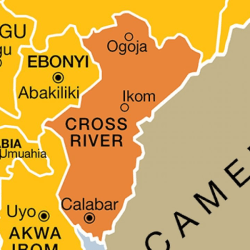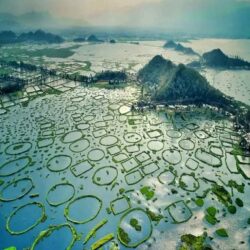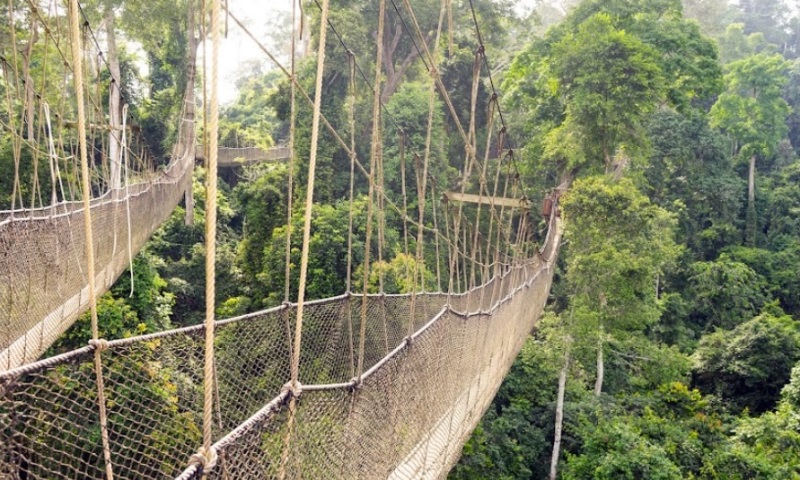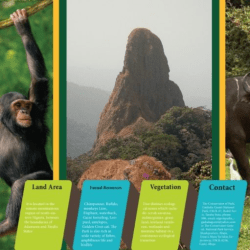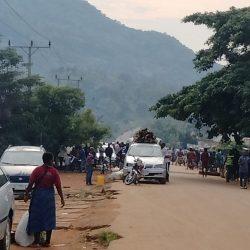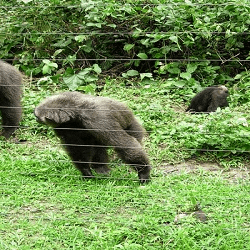The Cross River National Park is a prominent park in Cross River State, Nigeria.

Animal species found in both sectors include: antelopes, chimpanzees, high forest monkeys, buffaloes, high forest elephants, manatees and bush pigs.

Others are baboon, leopards and gorillas some of which are endangered species which have the park as their last stronghold in the whole of West Africa.


The park comprises two sections – Oban and Bosh/Okwongwo.
Location & Size
The Cross River National Park, 5005’ – 6029’North and 8015’ – 9030’East, covers 4000km2 in the South-East corner of Nigeria in Cross River State; lying South and East of a loop of the Cross River and extending along the Republic of Cameroon border. The Park is segmented into two non-contiguous Division, the Oban Division in the South part covering 3000km2 is ecologically contiguous with Korup National Park in the Republic of Cameroon; and Okwangwo Division in the Northern part covering 1000km2 is ecologically contiguous with Takamanda Forest Reserve (proposed National Park) also in the Republic of Cameroon.
Reasons for Constituting the Park
The Cross River National Park incorporates a large area of South-East Nigeria’s moist tropical forest between the Cross River and Republic of Cameroon border. In 1986 and 1987, the following three Africa wide I.U.C.N publications independently identified these particular forests as worthy of special conservation measures:
Directory of Afro-Tropical Protected Areas; Action Strategy for Protected Areas in the Afro tropical Realm; and Review of the Protected Areas System in the Afro tropical Realm.
All three emphasized the extreme biological richness of the resources, its uniquely intact Status and the increasing threat to its integrity represented by uncontrolled farming, logging and hunting activities. Cross River National Park is now the only significant protected forest in the rainforest zone of Nigeria, where more than 90% of its original forest has already been lost. As such the Park represents one of the country’s most important natural resource assets in terms of the protection of fisheries, watersheds and climatic stability, tourism opportunities and preservation of genetic resources and associated investment opportunities. This Park is preserving majority of Nigeria’s moist forest species and the future values associated with them.
Cross River National Park: One of the United Nation’s 25 Bio-Diversity Hotspots in the World
Cross River National Park is located in a region where for climatic reasons rainforest persisted throughout the Ice Age of the Pleistocene Epoch; this explains the area’s great biodiversity and implies that Cross River National Park will contribute disproportionately to the preservation of the world’s species complement.
Some Biodiversity statistics of Cross River National Park
· 10 specie of plants are new to science
· 8 specie of millipedes new to science
· 1 sub-specie of butterfly is new to science
· 1 specie of centipede is new to science
· 1 specie of Decapod is new to science
· 77 specie of plants are endemic
· 1 sub-species of Gorilla is endemic to the Cross River Loop.
· 2 species of Butterflies are endemic
· 3 species of Birds are new to Nigeria
· 11 species of fish are endemic
· 6 species of Frogs and Toads are
· 2 species of Lizards are endemic
· 3 species of snakes are endemic
· 2 species of wasp, Bees and Ants are endemic
The Park Harbors
– 119 species of mammal
– 300+ species of Birds – 950 species of Butterflies (90% of Nigeria’s total)
– 48 species of fish
– 600+ species of insect
– 63 species of Frogs and Toads
– 6 species of Tortoises and Crocodiles
– 20 species of Lizards
– 37 species of Snakes
– 18 Species of Primates (78% of Nigeria’s total)
– Over 1,500 species of plants and a lot more are yet to be discovered.
– 69 plant species are collected and used in curative therapy.
Cross River National Park’s Role In The Millennium Development Goal
The United Nation’s Millennium Development Goals as it affects National Parks calls for “Building Bridges between Biodiversity Conservation and Poverty Reduction Imperatives.” On the part of Cross River National Park, it has long been recognized that the physical integrity of the Park is most vulnerable to the action of the people living in and around it. The greater the value of the Park which is captured by them the safer the Park will be and therefore the concept of Park” Support Zone Development” has been adopted. This relies on emphasizing mutual dependence between the Park and nearby communities whereby the so-called negative impacts of the Park on the people is compensated for and advantages to be gained from the Park are realized to the greatest extent possible at the village level. In pursuance of this, the Park Management embarked on sustained community oriented development programmes in the following areas:
- Public Health (Construction of cottage clinics, supply of drugs and dressing and provision of electricity to some communities.)
- Education (Award of Bursary to indigent students in Higher Institution; construction of classroom, provision of educational material such as: exercise books, benches, chairs etc.)
- Micro-Credit Scheme (Provision of interest free loans to cooperative societies, supply of improved seedlings of cash crops to farmers; supply of livestock inputs to farmers and provision of technical advice to farmers free of charge)
- Rural Infrastructure (Construction of Feeder roads, bridges, electricity, water supply and annual grading of community roads)
- Employment (Over 96% of the Parks manpower staff from the surrounding communities come from the catchments areas otherwise known as Support Zone and South-South Geopolitical Zone (SSGPZ.)
- Institutional Partnership (The Park engages in institutional partnership with Environmental NGO’s and CBO’s to enhance sustainable livelihood to the communities, exchange ideas/ knowledge, help reduce poverty and improve capacity development.)
Eco-Tourism Promotion
Cross River National Park is the number one Eco-tourism destination in the south-south zone. The Park has developed modest eco-tourism infrastructure in the three major sectors of the Park. Present efforts of Management has raised the level of awareness and improved tourism development in Cross River State. Though funding is limited, modest tourism infrastructure has been maintained in Akamkpa Head Office, Butatong, Erokut Gate, and Kanyang. Within the two Divisions, hiking under the lush rainforest and mountaineering or Gorilla/Bird watching is a common phenomenon in Cross River National Park. In consonance with the setting up of the Presidential Council on Tourism, the fi fth meeting which was held in Calabar on the 16th June 2005, the Cross River National Park and the National Park Service generally have braced up in championing the promotion of ECOTOURISM in Nigeria.
The Management and staff of Cross River National Park and indeed the National Park Service are committed to the protection and conservation of these potentially viable Protected Areas (National Parks) and will put in all its energy to safeguard their sustainability to empower the local communities, all Cross Riverians, Nigerians and indeed all generations.
Reference: crossriverstate.gov.ng/tour%20state_3.htm
